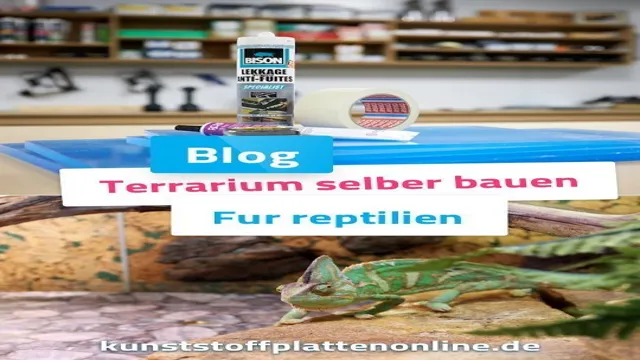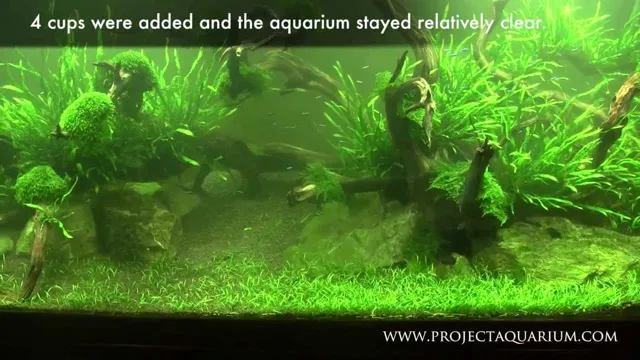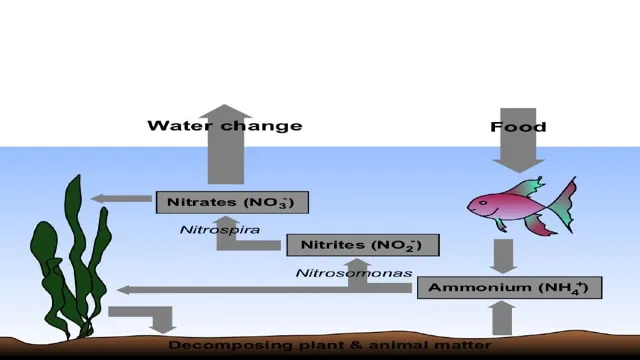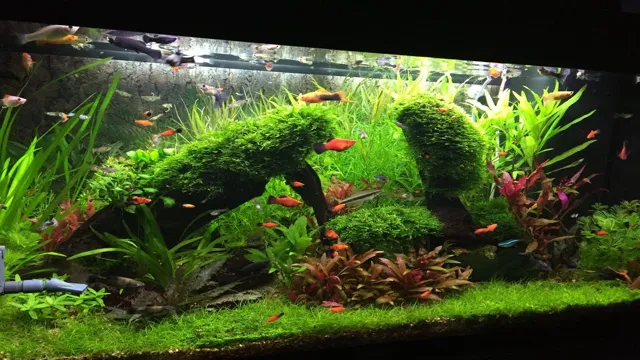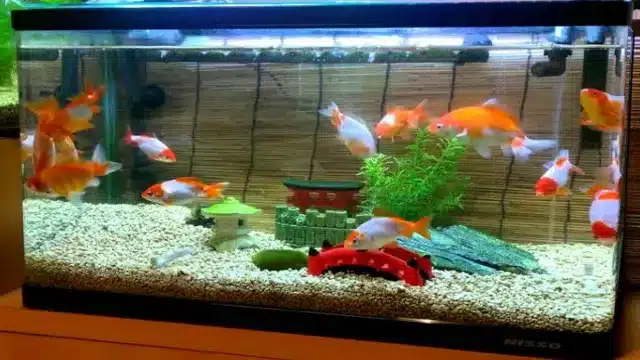Welcome to the beguiling world of aquariums, where life thrives in the cozy confines of a fish tank. Witnessing your aquarium bloom with vibrant aquatic plants is undoubtedly a sight to behold, but have you ever considered growing an aquarium from seeds? Luffy aquarium seeds are an excellent choice for beginners as they are relatively easy to maintain and require minimal upkeep. If you’re seeking to cultivate an aquarium that’s healthy and bountiful, this beginner’s guide is all you need.
Whether you are a newbie to gardening or a seasoned aquarist, we’ve got you covered. We’ll take you through the fundamentals of growing Luffy aquarium seeds, from selecting the right seeds to planting, maintaining ratio and so much more. Through this guide, we’ll equip you with the knowledge and skills to embark on this refreshing journey towards a thriving underwater garden.
Introduction
If you’re looking for an exciting addition to your aquarium, consider growing Luffy aquarium seeds! These seeds can add a vibrant green color and a unique texture to your tank. Luckily, growing them is relatively straightforward. First, you’ll need to soak the seeds in water for 24 hours to help them germinate.
After that, place the seeds in a substrate (like gravel or sand) and use a plant-friendly fertilizer to encourage growth. Luffy seeds require bright, indirect light and temperatures between 68-86°F. Keep the substrate moist but not waterlogged, and consider adding CO2 to promote healthy plant growth.
With patience and care, your Luffy aquarium seeds should sprout within a couple of weeks, and you’ll be rewarded with a beautiful and unique addition to your aquarium.
– What are Luffy Aquarium Seeds?
If you’re a fan of the anime and manga series One Piece, you may have heard of Luffy Aquarium seeds. These unique seeds are a crucial part of the design of the Thousand Sunny, the ship of the Straw Hat Pirates, captained by Monkey D. Luffy himself.
But what exactly are Luffy Aquarium seeds? In short, they are special, living seeds that have the ability to grow into various sea creatures, such as fish, sharks, and even whales. These seeds can create an aquatic environment right on the Thousand Sunny, allowing the crew to fish, swim, and explore the ocean without ever leaving their beloved ship. And while Luffy Aquarium seeds may not be real, they are a fascinating part of the One Piece universe, adding a touch of whimsy and magic to the pirate’s life at sea.
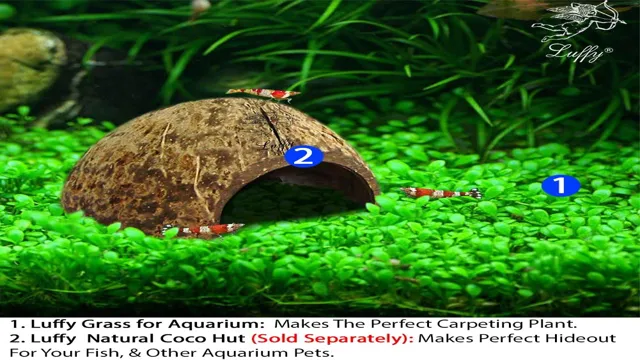
– Benefits of Growing Luffy Aquarium Seeds
Luffy Aquarium Seeds provide aquarium enthusiasts with numerous benefits that make it a worthwhile investment in their aquariums. These seeds are a great way to add some color and vibrancy to the aquarium, making it more aesthetically pleasing. They also help to create a natural ecosystem that is essential for the health and survival of the fish and other aquatic creatures in the aquarium.
Additionally, Luffy Aquarium Seeds are incredibly easy to grow and maintain, making them a great choice for aquarium beginners. With minimum effort, you can have a beautiful and thriving aquatic garden in your aquarium that will provide joy for both you and your aquatic pets. So, if you want to enhance your aquarium’s beauty, create a natural environment for your aquatic pets, and explore your green thumb, consider growing Luffy Aquarium Seeds.
Getting Started
If you’re just starting out with Luffy Aquarium Seeds, congratulations on taking the first step towards an amazing journey! Growing these seeds is a unique and exciting experience, but it can be a bit intimidating at first. The key to success is to be patient and follow a few simple steps. First, soak the seeds in aquarium water for 24 hours, changing the water every 6 hours.
Once they’ve sprouted, plant them in a substrate that suits your aquarium – sand or gravel both work well. Make sure to provide ample light and nutrients, and keep the water clean and well-circulated. With proper care, your Luffy Aquarium Seeds will grow into beautiful, vibrant plants that will add color and life to your aquarium.
Remember, it’s all about trial and error, so don’t be discouraged if you don’t get it right the first time. Keep trying and soon enough, you’ll be a pro at growing Luffy Aquarium Seeds!
– Requirements for Growing Luffy Aquarium Seeds
Before diving into growing Luffy aquarium seeds, there are a few requirements you should consider. First and foremost, you will need a clean aquarium that is set up with a filter, heater and adequate lighting to create the ideal growing environment for your seeds. It’s important to note that the temperature and lighting conditions will differ depending on the type of seeds you have.
Some seeds prefer higher temperatures and direct lighting, while others thrive in lower temperatures and indirect lighting. Therefore, researching the ideal conditions for your specific seeds is crucial to their growth and survival. Additionally, having a basic understanding of aquarium maintenance and water chemistry is vital to ensure the seeds have a healthy and safe growing environment.
Taking the time to set up and maintain your aquarium properly will give your Luffy aquarium seeds the best chance for success. (See Also: How to Lower Calcium and Alkalinity in Reef Aquarium Like an Expert)
– Preparing Your Aquarium
Before bringing fish home, you must make sure your aquarium is properly prepared to ensure that they thrive. First, choose an aquarium that is suitable for the fish you plan to keep. Fill it with water and let it sit for 24 hours to allow the water to dechlorinate and build beneficial bacteria for the tank’s ecosystem.
Once filled, it’s time to add your decorations and plants. Not only do rocks, coral, and driftwood add a beautiful aesthetic, but they also create hiding spots and provide vital nutrients for your fish. Additionally, plants absorb nitrates from the water, improving water quality.
Pick plants that are easy to care for but also compatible with your fish’s needs. Lastly, choose the right filter for your tank size and stock level, and let it run for a few days to establish bacteria colonies before adding fish. Proper preparation will help ensure that your fish thrive in their new home.
– Soaking the Seeds
Starting your own garden is a fulfilling and rewarding process. One of the initial steps to take is soaking the seeds before planting them in your garden bed. Before beginning, it’s important to know what type of seeds you have as they all behave differently.
Some seeds can be soaked for hours or even days, while others don’t require soaking at all. Soaking seeds helps the outer layer soften and allows moisture to penetrate, which in turn helps the seed germinate faster. Additionally, soaking the seeds can help remove any chemicals or inhibitors that may be on the outer coating.
It’s essential to use clean water when soaking the seeds as any impurities can hinder the germination process. To soak your seeds, simply place them in a container and fill it up with clean water, enough to cover the seeds entirely. Leave them to soak for the recommended number of hours and drain the water.
With well-soaked seeds, your garden is well on its way to success!
Planting and Maintenance
Growing Luffy aquarium seeds can be an exciting and rewarding experience. To begin, make sure that you have a clean aquarium with fresh water and a suitable substrate. Next, sprinkle the seeds on top of the substrate and cover them with a thin layer of gravel.
It’s essential to maintain the water temperature and pH levels to provide an ideal environment for the seeds to germinate. Once the seeds have started to grow, it’s best to provide them with a source of light and nutrients by using aquarium plant fertilizers. It’s crucial that you don’t overcrowd the aquarium with too many plants and that you trim them regularly to ensure healthy growth.
With some patience and continued care, you can create a stunning underwater garden with Luffy aquarium seeds. So go ahead and give it a try, your aquarium will thank you for it!
– Planting the Seeds
When it comes to planting and maintaining a garden, there are a few key things you should keep in mind to ensure success. First, it’s important to prepare your soil properly by removing any weeds or debris and adding in any necessary amendments. Next, select the right plants for your climate and soil type, making sure to space them out properly and give them enough room to grow.
Regular watering and fertilization is also key, and it’s important to keep an eye out for any pests or diseases that may affect your plants. In addition to these steps, it’s helpful to stay organized and keep track of your garden’s progress throughout the season. By taking the time to properly care for your plants and stay on top of any issues that arise, you can enjoy a beautiful and fruitful garden all season long.
So get out there and start planting those seeds, and watch as your garden grows and thrives!
– Providing the Right Conditions for Growth
When it comes to growing plants, providing the right conditions is vital for their success. Starting with planting, it’s important to choose an appropriate location that offers sufficient sunlight, soil moisture, and adequate drainage. These factors will ensure that the seeds or seedlings have everything they need to establish healthy roots and grow into strong plants. (See Also: How to Build Part Aquarium Vivarium – A Step-by-Step Guide for Creating Your Own Aquatic Paradise)
Ongoing maintenance is also essential to keep plants thriving. This involves regular watering, fertilizing, pruning, and pest control, as well as monitoring for signs of disease or nutrient deficiencies. Just like a parent raising a child, growing plants requires attention and care.
No matter what type of plant you’re growing, from flowers to vegetables to trees, providing the right conditions for growth is key to a successful harvest. So, go ahead and get your hands dirty, and watch as your plants flourish under your loving care.
– Maintaining and Caring for Your Luffy Aquarium Seeds
If you’re looking for an easy and low-maintenance way to have a beautiful and thriving aquarium, then choosing Luffy Aquarium Seeds is the way to go. Planting and maintaining these seeds is a breeze, and with the proper care, they can flourish for a long time. Start by choosing a good substrate and planting the seeds, making sure to follow the instructions carefully.
Once the seeds have been planted, provide good lighting and a regular feeding schedule. Be careful not to overfeed or leave too much debris in the tank, as this can cause algae growth and other problems. Regular water changes and a clean tank are also important for the health of the plants.
With just a little bit of effort, you can have a stunning underwater landscape that will make you feel like you’re at the bottom of the ocean.
Harvesting and Future Growth
If you’re keen on growing Luffy aquarium seeds, there are a few things to keep in mind to ensure a successful harvest and future growth. First and foremost, make sure the seeds are planted in a suitable environment. These seeds require specific, favorable conditions to start growing, such as good water quality, appropriate lighting, and nutrient-rich substrate.
Once they start to grow, seek to maintain these conditions and keep an eye on any potential issues that may arise. As the seeds mature, they will require pruning and trimming to promote healthy growth and expansion. Additionally, be sure to periodically add new nutrients to the substrate to nourish the developing plants.
If all goes well, your Luffy aquarium seeds should grow into a beautiful and thriving aquatic garden that enhances the aesthetic and health of your tank ecosystem.
– Harvesting Your Luffy Aquarium Seeds
Harvesting and Future Growth of Your Luffy Aquarium Seeds As your Luffy aquarium begins to flourish, you’ll eventually need to harvest your seeds for future growth. This process is simple and should be done when the majority of the seeds have sprouted into lush green moss. To harvest your Luffy seeds, simply take a pair of clean scissors and trim the moss from your aquarium wall.
Be sure to only take a portion of the moss, leaving the rest to continue growing. Once harvested, place your Luffy seeds into a small container with water and allow them to soak for a few hours. This will help to remove any debris or pollutants that may have collected on the wall of your aquarium.
After soaking, remove the seeds from the water and let them dry in a cool, dark area before storing them in a dry and cool location. With proper care and attention, your harvested Luffy seeds can be used to grow even more thriving aquariums in the future.
– Storing Your Seeds for Future Growth
When it comes to harvesting your plants, it’s important to think about storing your seeds for future growth. This is especially important if you have a favorite variety of plant or if you want to ensure that you have seeds for the next growing season. First, make sure that your seeds are fully ripe before harvesting them.
This will usually be indicated by the seeds turning a darker color or starting to crack open. Once you have harvested your seeds, you can store them in a cool, dry place in an airtight container. Be sure to label the container with the type of seed, date of harvest, and any other relevant information.
By properly storing your seeds, you’ll be able to continue growing your favorite plants year after year. (See Also: How to Lower Alkalinity in an Aquarium: Top Effective Tips)
Conclusion
In conclusion, growing Luffy Aquarium Seeds may seem daunting at first, but it’s a rewarding experience that will bring some serenity and creativity to your aquarium. Just remember to have patience, to give your seeds plenty of light and nutrients, and to never underestimate the power of curiosity and experimentation. Whether you’re a seasoned aquarist or a curious beginner, growing Luffy Aquarium Seeds is bound to bring joy and a bit of wonder to your underwater world.
So dive in, explore, and let your seeds flourish into a beautiful, one-of-a-kind creation!”
– Final Thoughts and Tips
As you harvest your crops, it’s important to think about future growth. One way to ensure continued success is to rotate your crops. This means switching out what you plant in a given area each growing season to prevent soil depletion and reduce the risk of pests and diseases.
Additionally, consider trying out different varieties of the same crop or experimenting with entirely new ones to see what works best on your land. Keeping detailed records of your harvest yields and planting successes can also help you plan for future seasons and make informed decisions about crop rotation and diversification. With careful planning and attention to detail, you can continue to reap bountiful harvests in the years to come.
FAQs
What are Luffy aquarium seeds?
Luffy aquarium seeds are small, live plants that can be easily grown in your aquarium. They provide a natural environment for your fish and contribute to the overall aesthetic of your tank.
How do I grow Luffy aquarium seeds?
To grow Luffy aquarium seeds, you simply need to soak them in water for a few hours until they are hydrated, and then place them in your aquarium substrate. They will start to grow within a few days.
Do I need special lighting to grow Luffy aquarium seeds?
Luffy aquarium seeds can grow in both low and high light conditions. However, providing them with some form of artificial or natural light will help them grow faster and healthier.
Can I plant Luffy aquarium seeds in sand?
Yes, you can plant Luffy aquarium seeds in sand. However, make sure that the sand is properly rinsed and clean before planting. Also, try to mix some nutrient-rich substrate with the sand to promote growth.
How often should I fertilize Luffy aquarium seeds?
Luffy aquarium seeds do not need frequent fertilization. However, you can add some liquid fertilizer once a week to boost their growth and keep them healthy.
What temperature range is ideal for growing Luffy aquarium seeds?
Luffy aquarium seeds can grow in a temperature range of 72-84°F (22-29°C). However, they grow best in warmer temperatures that range from 78-82°F (25-28°C).
Can I grow other plants in the same aquarium as Luffy aquarium seeds?
Yes, you can grow other plants in the same aquarium as Luffy aquarium seeds. However, make sure that these plants have similar growth requirements and do not overcrowd the aquarium.


